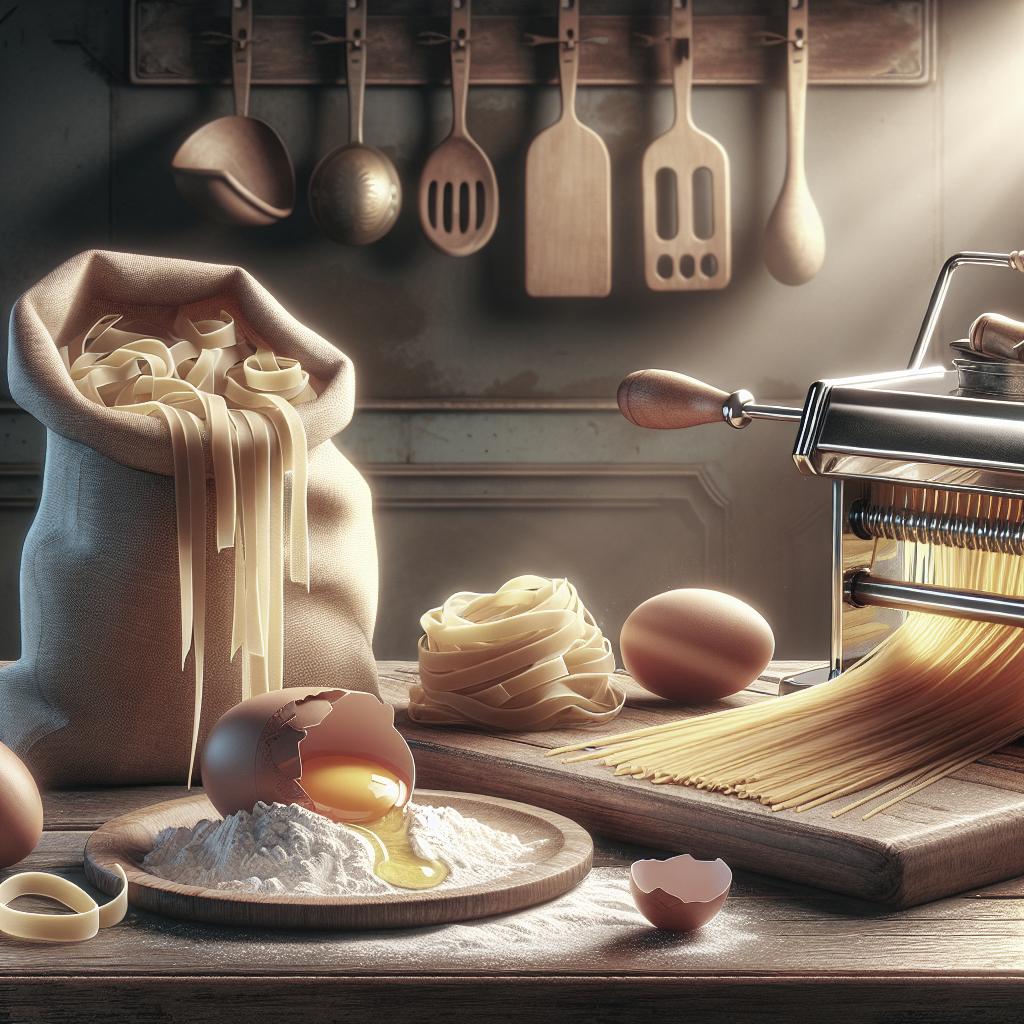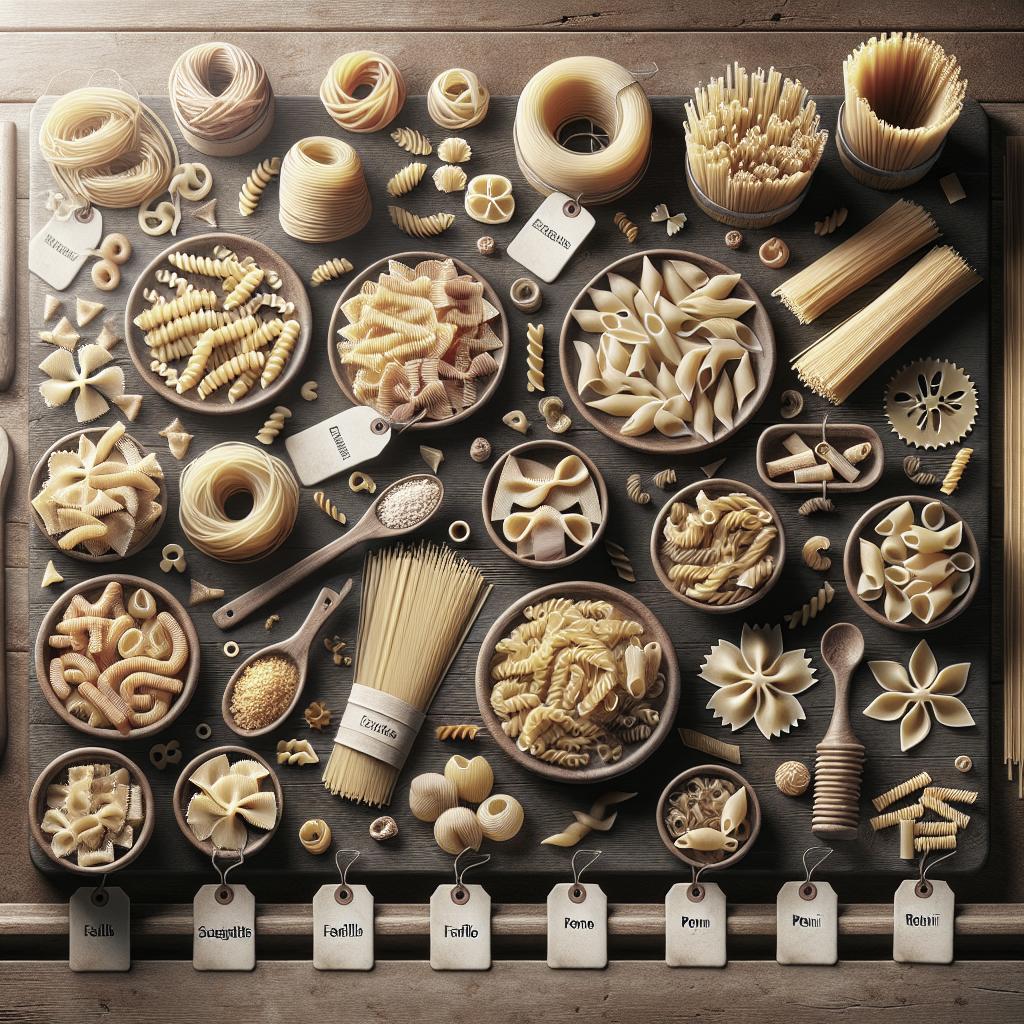“`html
How to Make Gluten-Free Pasta
Making gluten-free pasta at home is a rewarding culinary endeavor that allows you to enjoy a classic Italian staple, sans gluten. Increasingly, many are realizing the benefits of crafting their own pasta, especially when dietary restrictions are a concern. This blog post will guide you through a simple yet effective gluten-free fresh pasta recipe. You’ll discover the ingredients needed, essential special equipment, step-by-step directions, and tips for ensuring success. With this guide, everyone from home cooks to gluten-free lifestyle enthusiasts can indulge in the delight of homemade pasta, free from gluten and full of flavor and texture.
Gluten-Free Fresh Pasta Recipe
Creating a delicious and tender gluten-free pasta requires understanding the unique properties of gluten-free flours. This recipe has been refined to offer the perfect blend of texture and taste, ensuring your pasta holds together well and provides a similar experience to traditional pasta.
The goal is to create a dough that’s easy to work with, yet strong enough to handle cooking without disintegrating. Over the years, through trial and experiment, this recipe has been developed to satisfy every necessity of a passionate pasta lover.
Once you’ve mastered this basic recipe, you can experiment further by adding herbs, spices, or even vegetable purées to tailor the pasta to your gastronomic preferences.
Ingredients
The key to successful gluten-free pasta lies in choosing the right mix of flours. For this recipe, you’ll need a combination of gluten-free all-purpose flour, tapioca starch, and xanthan gum. These ingredients ensure the pasta has enough structure without being heavy.
In addition to the flours, you’ll need eggs as a binding agent, a pinch of salt for flavor, and a bit of olive oil to lend the pasta a delightful sheen and help with moisture retention. Using fresh, high-quality ingredients will elevate your pasta to new heights of taste.
By keeping these staples on hand, you can quickly whip up fresh pasta whenever the craving strikes, making it a versatile option for any meal.
Directions
Begin by whisking together the gluten-free flour, tapioca starch, and xanthan gum in a large bowl. Form a well in the center, adding the eggs, olive oil, and a touch of water. Use a fork to gradually incorporate the flour into the wet ingredients, forming a cohesive dough.
Knead the dough on a lightly floured surface until smooth and elastic. If the dough feels too sticky, dust it with a little more flour as needed. Wrap the dough in plastic wrap and let it rest for at least 30 minutes to let the ingredients meld and hydrate.
After resting, roll out the dough using a pasta machine or a rolling pin to your desired thickness. Cut the pasta into your preferred shape, and let it dry on a floured surface or pasta drying rack before cooking. Cook in boiling water for 2-3 minutes, and enjoy with your favorite sauce.
Special Equipment
To make the pasta-making process more efficient, having the right equipment is essential. A pasta machine can greatly simplify rolling and cutting the dough, ensuring even thickness throughout. If a pasta machine isn’t available, a rolling pin will suffice for hand-rolling.
A pasta drying rack can be helpful for drying the pasta before cooking, preventing the strands from sticking together. Additionally, sharp knives or a pasta cutter are useful for creating clean, precise cuts for different pasta shapes.
Investing in a few key pieces of equipment can transform the pasta-making experience from daunting to delightful, allowing you some creative freedom in the shapes and sizes of the pasta you create.
Read More
Why It Works
The blend of gluten-free flours, along with the addition of xanthan gum, ensures that the pasta has the elasticity and strength needed to mimic traditional wheat-based pasta. Xanthan gum acts as a stabilizer, giving the dough elasticity without the gluten, helping to prevent it from breaking apart during the cooking process.
The egg serves as both a moisture agent and a binder, providing the necessary structure to hold the dough together. By allowing the dough to rest, the ingredients are given time to meld together, which assists in achieving a smooth and manageable dough.
May 2014
Back in May 2014, the demand for gluten-free recipes started to surge, partly due to the increase in gluten sensitivities and celiac disease awareness. This led to a growing community eager for reliable and tasty gluten-free alternatives. As a result, gluten-free cooking began to evolve, with innovative recipes like this pasta becoming accessible.
Since then, the evolution of gluten-free cooking has seen significant advancements in ingredient accessibility and quality, propelling home cooks and professional chefs to experiment and expand the gluten-free culinary world.
| Section | Summary |
|---|---|
| Gluten-Free Fresh Pasta Recipe | A refined recipe for gluten-free pasta focusing on texture and taste using a trio of flours and gum for structure. |
| Ingredients | Combination of gluten-free flour, tapioca starch, xanthan gum, eggs, salt, and olive oil to create a balanced and flavorful dough. |
| Directions | Mix the dry and wet ingredients to form a dough, knead, rest, roll, cut, and cook for perfect gluten-free pasta. |
| Special Equipment | Discusses the uses of pasta machines, rolling pins, drying racks, and pasta cutters in the preparation process. |
| Read More | Includes insights on why the recipe works and a brief history of gluten-free cooking advancements since May 2014. |
“`


